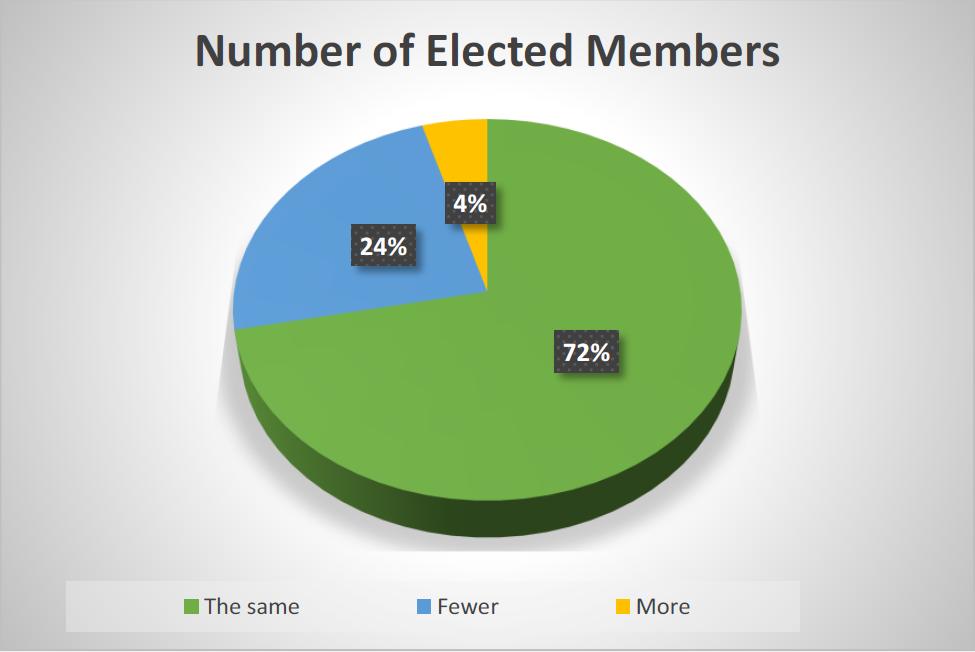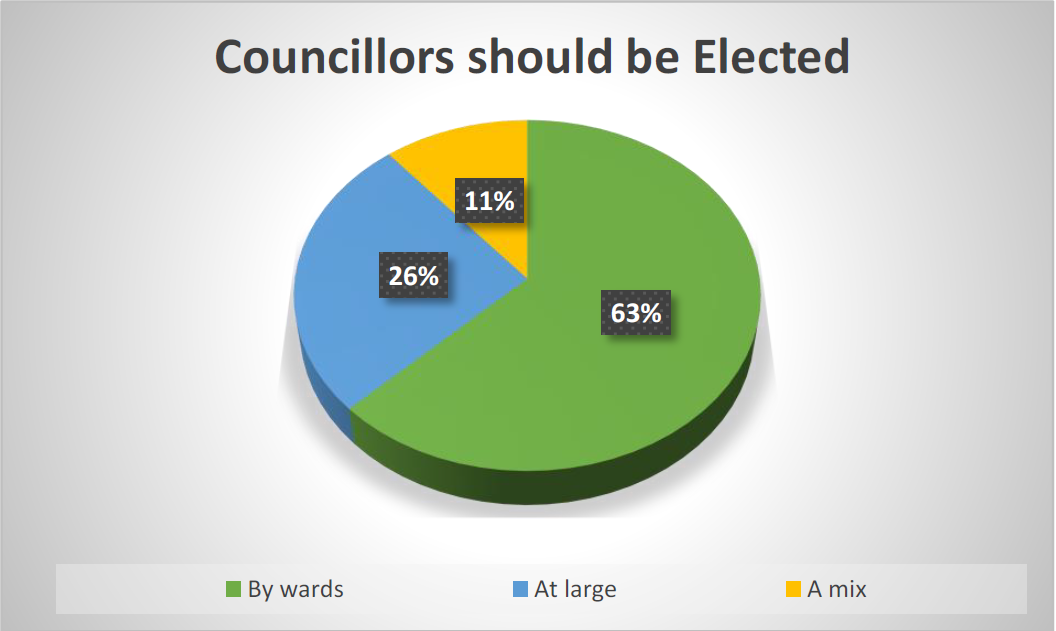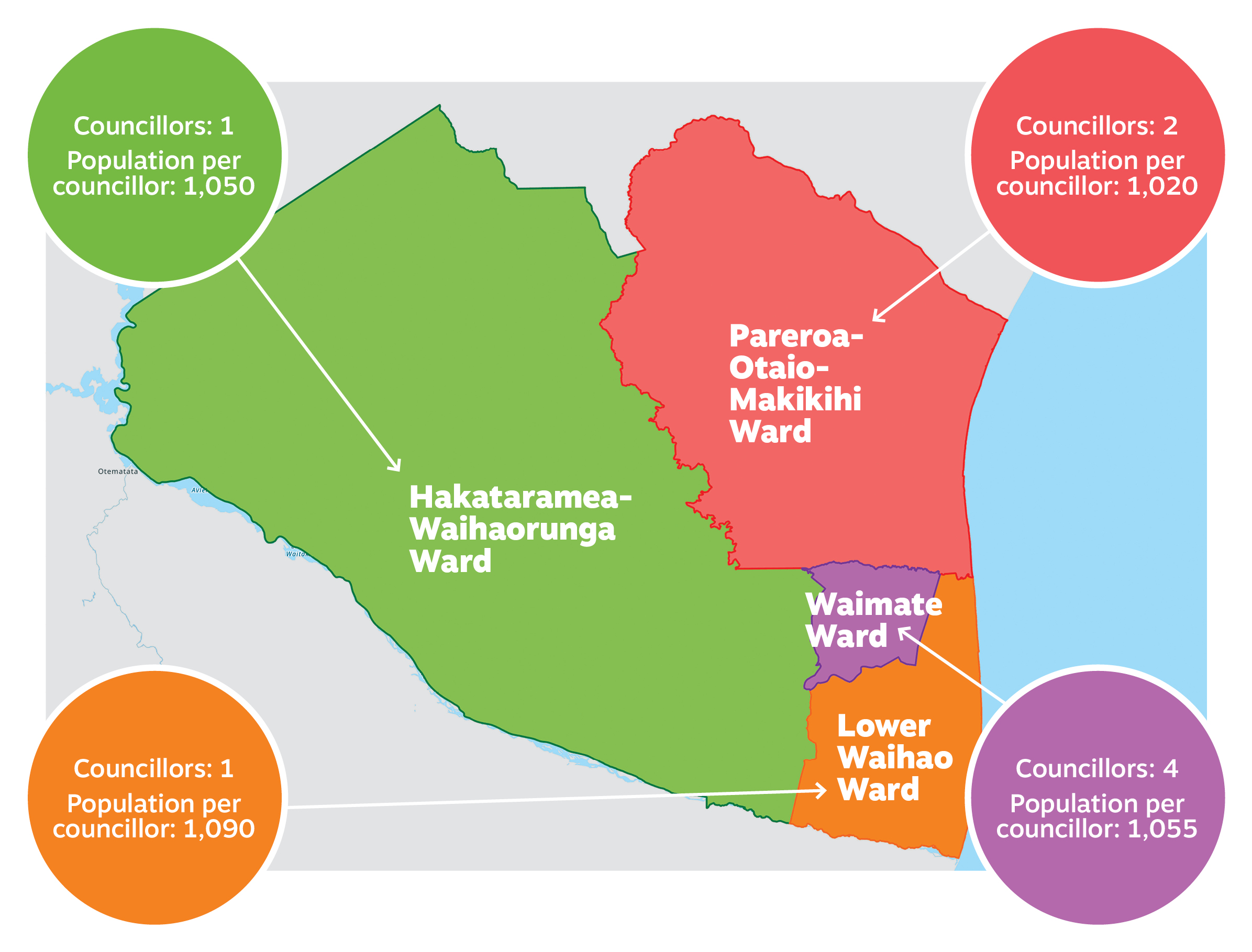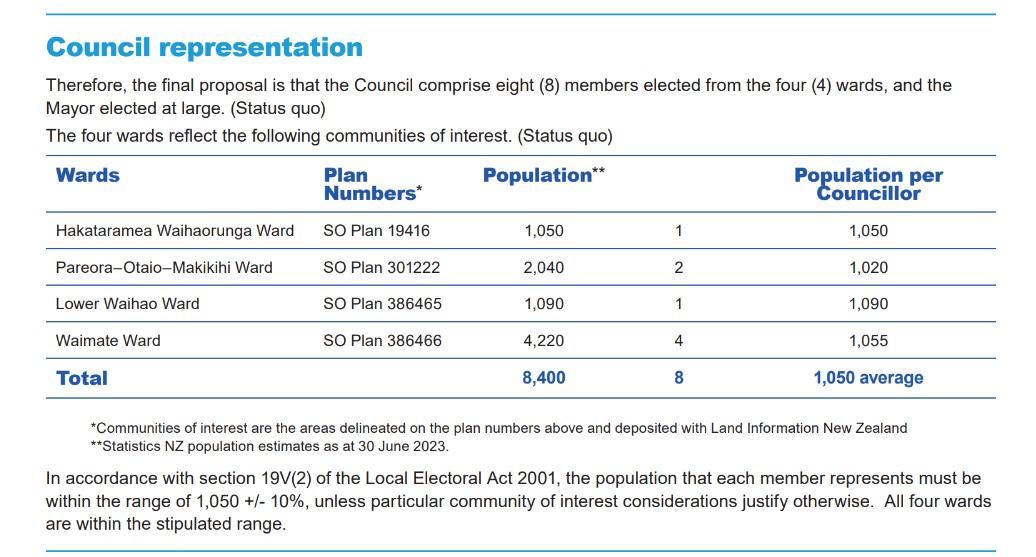Representation Review
Representation review – what is it?
All local councils are required to carry out a representation review at least every six years under the Local Electoral Act 2001. Representation arrangements are the number of elected members on council and the way in which they are elected. This is to make sure residents have fair and effective representation at local elections.
Will this affect my rates?
Councillors are funded from district rates, but changes to the ward boundaries or the number of councillors will not have a significant impact on rates.
Councillors’ remuneration is based on a fixed pool of funds which is set independently by a government agency, the Remuneration Authority. This amount does not go up or down in relation to the number of councillors. It also means that any change in the number of councillors would not affect the total amount paid to councillors overall, as the total is divided between the number of elected members.
What are wards?
Wards are areas of a district identified for electoral purposes. They work in the same way as seats in a general election.
Currently people can only vote for candidates in their ward, but everyone gets to vote for who they want as Mayor.
Although candidates stand for their ward area, when voted on to council, councillors swear an oath to work for the entire district.
The idea of the ward system is that all parts of the district are fairly represented.
How are the wards decided?
The population of the wards must be within 10% of the average across the district. Council must balance this while considering natural geography and cultural boundaries.
What do other councils have?
Nearby, Timaru District Council has nine councillors elected from three wards and has community boards in Geraldine, Pleasant Point and Temuka.
Mackenzie District Council, with a smaller population than Waimate, has seven councillors from three wards – Twizel, Tekapo and Fairlie.
With a similar size as Waimate, Westland District Council has eight councillors elected from three separate wards.
Representation arrangements for the 2025 and 2028 local elections
Pre-engagement community survey
On 27 February 2024 a report on the initial proposal was provided to Council. Prior to a decision being made, Council wanted to know what the community thought of the number of elected members and how they are elected. An electronic survey through the platform Survey Monkey was designed and promoted via social media as well as a paper copy printed and delivered to all households in the Waimate District.
Results for community survey
A total of 225 surveys were received by Council.
- 158 people indicated they wish to see the same number of Councillors
- 52 people indicated they wish to see fewer
- 10 people indicated they wish to see more

- 136 people indicated they wish to stay with the current ward system
- 57 people indicated they wish to have at large, one electorate for the whole district
- 24 people indicated they wish to have a mix, for example all rural as one ward and urban as another ward

Initial proposal for representation arrangements for the 2025 and 2028 local elections
On 28 May 2024 the Waimate District Council reviewed its representation arrangements, pursuant to section 19H of the Local electoral Act 2001 and resolved that the following proposal applies for the elections to be held in 2025 and 2028.
Council representation
It is proposed that the Council comprise eight (8) members elected from the four (4) wards, and the Mayor elected at large. (Status quo)
The four wards reflect the following communities of interest. (Status quo)
| Wards | Plan Numbers* | Population** | Councillors | Population per Councillor |
| Hakataramea Waihaorunga Ward | SO Plan 19416 | 1,050 | 1 | 1,050 |
| Pareora–Otaio–Makikihi Ward | SO Plan 301222 | 2,040 | 2 | 1,020 |
| Lower Waihao Ward | SO Plan 386465 | 1,090 | 1 | 1,090 |
| Waimate Ward | SO Plan 386466 | 4,220 | 4 | 1,055 |
| Total | 8,400 | 8 | 1,050 (average) |
*Communities of interest are the areas delineated on the plan numbers above and deposited with Land Information New Zealand
**Statistics NZ population estimates as at 30 June 2023.
In accordance with section 19V(2) of the Local Electoral Act 2001, the population that each member represents must be within the range of 1,050 +/- 10%, unless particular community of interest considerations justify otherwise. All four wards are within the stipulated range.

Reasons
- Overwhelming results from our pre-engagement community survey.
- All wards comply with the legislative requirements and provide for fair
- representation.
- The existing ward structure is well understood by the electors.
- Council is satisfied that the existing structure will continue to provide effective representation for the district’s communities of interest.
- No significant changes have occurred since 2018 to indicate that the Council should be proposing changes to the representation arrangements at this time.
Further information
An information pack is available at Council reception, 125 Queen Street, Waimate.
Alternatively, you can download it here: Information pack
Final proposal for representation arrangements for the 2025 and 2028 local elections
At the Council meeting on 23 July 2024, Council heard and considered submissions regarding the initial proposal for representation arrangements for the 2025 and 2028 local elections. Council has resolved the following:
RESOLUTION 2024/114
Moved: Mayor Craig Rowley / Seconded: Cr Tom O’Connor
1. That Council considered the submission and decided that the initial proposal is to be adopted without changes, with the reason being this is the clearly shown and preferred option of the pre-consultation.
2. That the Final Proposal is publicly notified.

Appeals
Any person who made a submission on Council’s initial proposal may lodge an appeal against the Council’s decision. An appeal must relate to the matters raised in that person’s submission.
Appeals must be made in writing and must be received by Council no later than 12pm on Thursday 29 August 2024.
Appeals are to be emailed to submission@waimatedc.govt.nz

